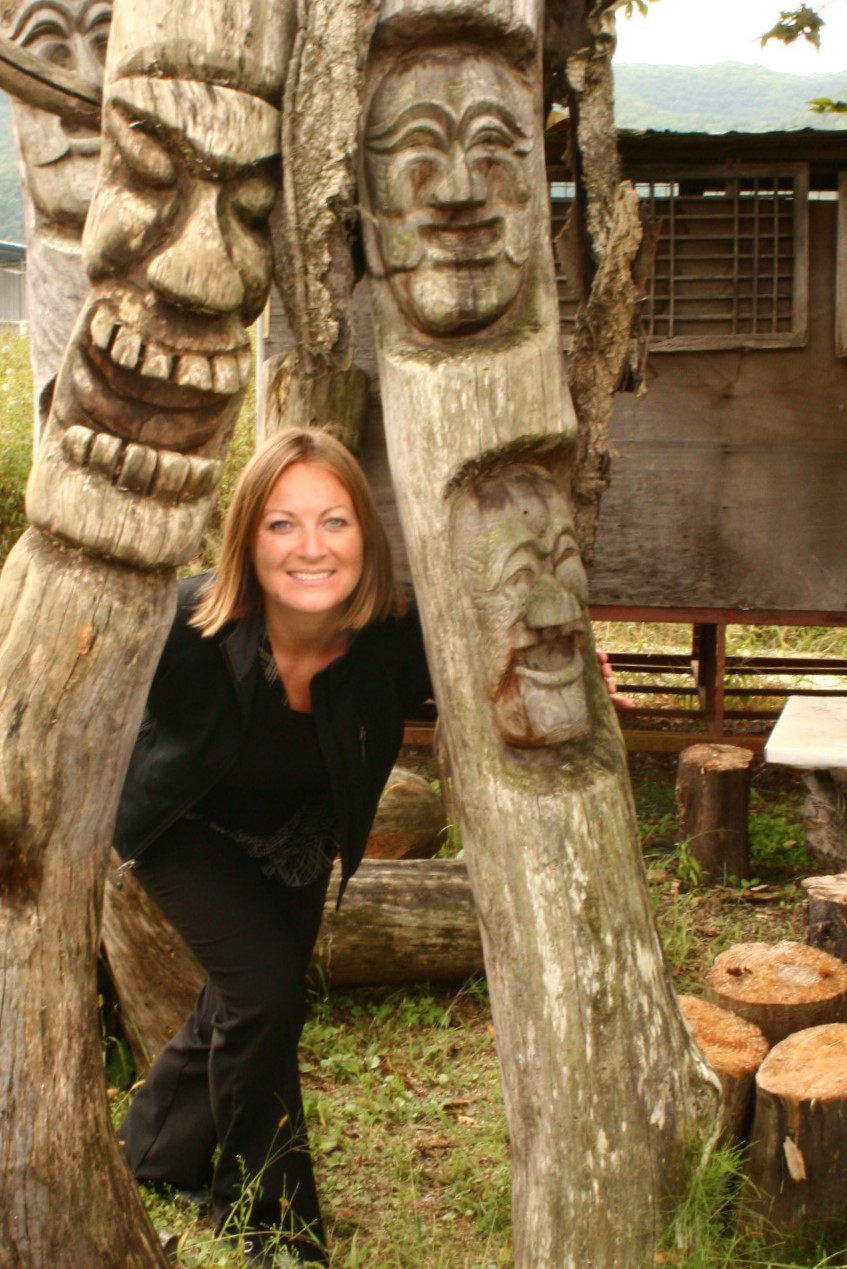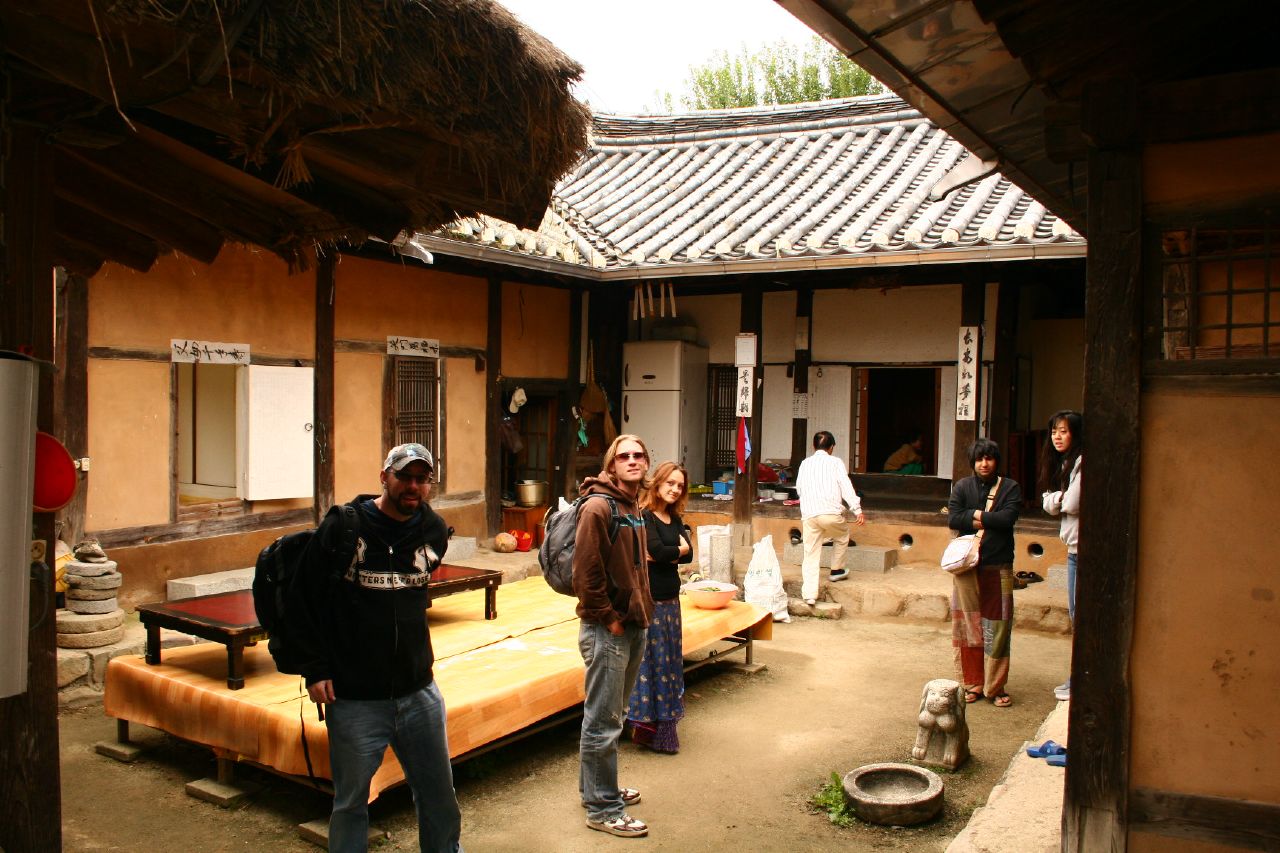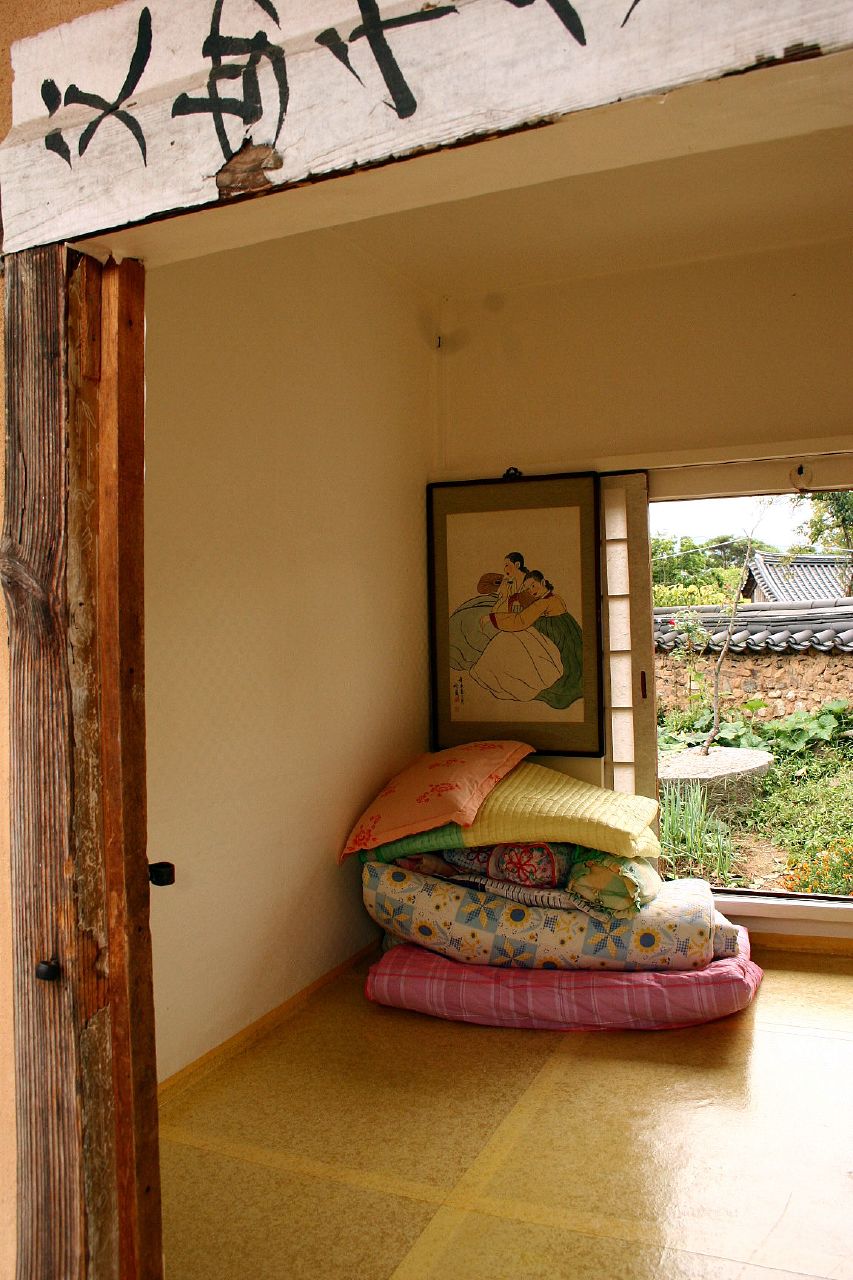 What do troupes of masked performers, hoards of happy onlookers, one quaint traditional village, and a shower of shimmering fireworks have in common? If you guessed the Andong Maskdance Festival, you were right :)
What do troupes of masked performers, hoards of happy onlookers, one quaint traditional village, and a shower of shimmering fireworks have in common? If you guessed the Andong Maskdance Festival, you were right :)This weekend marked the beginning of a ten-day celebration in Andong, Korea's south-eastern Gyeongsangbuk province -- a festival to honor the tradition of the mask and its place in cultures around the world, and in Korea's history in particular. Hahoe, home of the legendary Korean wooden masks, is steeped in the folklore surrounding their creation.
According to legend:
"A series of disasters and bad luck were happening in the peaceful and beautiful Hahoe Folk Village, and all villagers were very concerned. One day, Mr. Heo, a good person from Hahoe Folk Village, dreamed about a Folk God who told him what he must do:Even today, Hahoe is a peaceful and beautiful folk village where life seems to carry on much the same as it did centuries ago. And despite the busloads of tourists that come from around the country (and world) to sample a taste of traditional Korean life and enjoy its peaceful ambience, it maintains some semblance of authenticity, which is part of its subtle charm.
'You should clean your body every day and carve a set of masks with your heart -- then all disasters will disappear. But there is one strict rule: You must finish the work within 100 days and no one is allowed to see you during the time that you are making the masks.'"So Mr. Heo started to work on the masks. He did not tell anyone else in the village about his dream. One day, a lady who lived in the same village and who loved Mr. Heo very much, his as she waited for him. She could not bear it any more at stole a glance at him. As soon as she did this, Mr. Heo fell down and died, leaving one Mask unfinished, Imae (Foolish Servant). This is why Imae Mask does not have a chin, as it was left unfinished." [note from me: can you find it in the photo to the right?]
"Villagers of Hahoe danced with the Hahoe masks (aristocrat, scholar, young bride, meddler, Buddhist monk, butcher, old widow, young woman and foolish servant) and finally danced the village back to peace. "
 This past weekend, I had a chance to spend a chilly night and leisurely morning soaking up the special flavor of Korean culture that Hahoe serves up on a heaping platter. I arrived by bus with a group of CouchSurfers (who converged in Andong from various points around the country) Saturday night, after poking around the festival grounds. As we stepped off the bus and into the dark night, I tugged at the cuffs of my jacket, pulling them over my hands to ward off the sting of the evening chill. We walked along a quiet dirt road which followed a riverbank until we arrived at the traditional house, Hagungje #13, which was our home for the night.
This past weekend, I had a chance to spend a chilly night and leisurely morning soaking up the special flavor of Korean culture that Hahoe serves up on a heaping platter. I arrived by bus with a group of CouchSurfers (who converged in Andong from various points around the country) Saturday night, after poking around the festival grounds. As we stepped off the bus and into the dark night, I tugged at the cuffs of my jacket, pulling them over my hands to ward off the sting of the evening chill. We walked along a quiet dirt road which followed a riverbank until we arrived at the traditional house, Hagungje #13, which was our home for the night.Though it was dim, as we stepped into the house, muted light emanating from an open door gave us a view of the house's unusual arrangement. It was built as a series of rooms, which comprised four outer walls, all facing an inner courtyard which was exposed to the open air. Short sets of cement steps led from the ground to any of a number of rooms, most of which served as sleeping areas. I peered inside one of the rooms and was intrigued by its small size and spartan furnishings. There was enough room for four or five bodies to lay sardine-style on a hard floor, and a "yo" (traditional Korean mattress) and stack of blankets to warm us. A window at the opposite end of the room, a simple wooden frame lined with rice paper which slid along a wooden track and latched with a fabric tie, was the only other decoration.
 The kitchen, set in the back corner of the house, was bustling as the old couple living in the house began to prepare our dinner. After dropping our bags and removing our shoes, we stepped into the "dining room," a large, low-lying wooden slab near the courtyard. Although the table was quite long, our group was bursting in size, and we spilled over onto two adjacent round tables, filling up the entire area with our bodies and energetic conversation. The man of the house began what turned out to be an insanely busy job of waiting on the lot of us as we feasted on platters of steaming hot and spicy "jjim dalk," Andong's signature dish -- a mixture of chicken bits, glass noodles, leeks, and near-lethal doses of hot pepper (though somehow, I didn't think our dishes were deathly spicy).
The kitchen, set in the back corner of the house, was bustling as the old couple living in the house began to prepare our dinner. After dropping our bags and removing our shoes, we stepped into the "dining room," a large, low-lying wooden slab near the courtyard. Although the table was quite long, our group was bursting in size, and we spilled over onto two adjacent round tables, filling up the entire area with our bodies and energetic conversation. The man of the house began what turned out to be an insanely busy job of waiting on the lot of us as we feasted on platters of steaming hot and spicy "jjim dalk," Andong's signature dish -- a mixture of chicken bits, glass noodles, leeks, and near-lethal doses of hot pepper (though somehow, I didn't think our dishes were deathly spicy).Some of the group took off for the riverbank to watch fireworks, while others (myself included) stayed behind to finish dinner and warm up under layers of blankets. I later found out that this wasn't your typical fireworks show -- it was a special affair (...and I'm still chiding myself for missing it. I suppose there's always next year...) Seonyu Julbulnori, or traditional Korean fireworks, aren't shot from the ground, as are the festive explosions we're accustomed to. These fireworks are like gigantic sparklers strung above the ground. When they're lit, they create the ethereal feeling of falling stars or, as Roboseyo describes (and I quite like his visual), "bright flower petals floating to the ground."
[Check out this video footage from Roboseyo]
The rest of the night was a blur as round after round of soju and maggeolli found their way to our table, and the energy wound up before the evening wound down. Eventually, I retired to my shared room, tucked my too-thin blanket around my shivering body, and managed to settle into some sort of sleep (though between the winter chill and neighboring snorers, it wasn't particularly productive).
 The next morning, after waking the the sounds of chirping birds outside our rice-paper window, new-found friend Adam (also an English teacher in Korea) and I did a little exploring around the village. We circled its perimeter, walking along narrow, dusty roads that tangled their way through the village, out to the edges of its rice fields and along the river, enjoying the peaceful pace of this rural respite from the busy world just outside its gates. We watched local farmers working in their fields, listened to the sound of wind blowing over vast carpets of rice crops, and even managed to find a litter of playful puppies. After putting our cameras to good use at some sort of wooden statue mini-park, we said farewell to our fair village and returned to the festival grounds to finish out the Maskdance weekend.
The next morning, after waking the the sounds of chirping birds outside our rice-paper window, new-found friend Adam (also an English teacher in Korea) and I did a little exploring around the village. We circled its perimeter, walking along narrow, dusty roads that tangled their way through the village, out to the edges of its rice fields and along the river, enjoying the peaceful pace of this rural respite from the busy world just outside its gates. We watched local farmers working in their fields, listened to the sound of wind blowing over vast carpets of rice crops, and even managed to find a litter of playful puppies. After putting our cameras to good use at some sort of wooden statue mini-park, we said farewell to our fair village and returned to the festival grounds to finish out the Maskdance weekend.See more pictures of my visit to Hahoe Village here









No comments:
Post a Comment